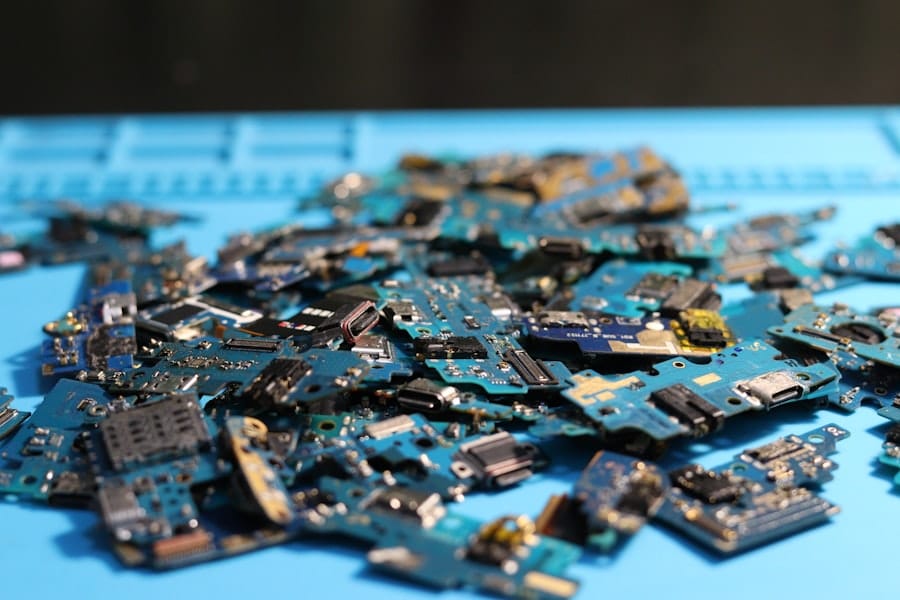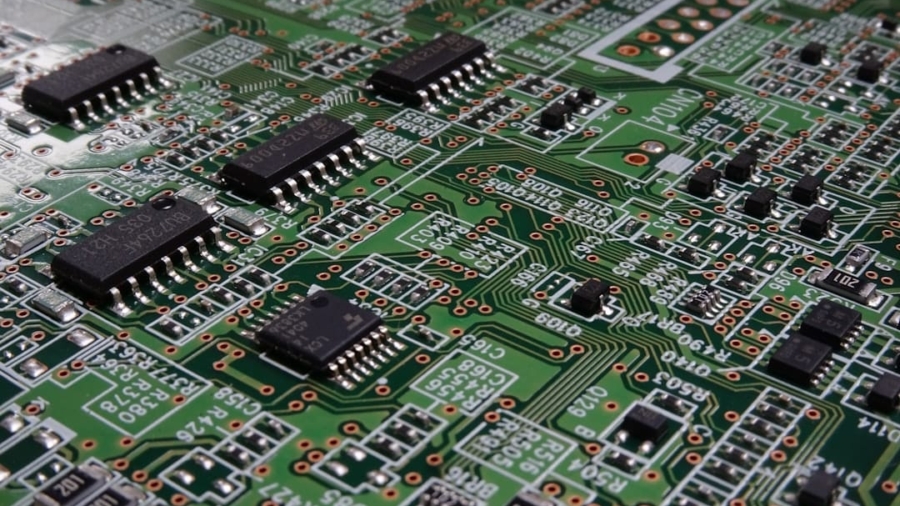The rapid advancement of technology has led to an unprecedented increase in electronic waste, commonly referred to as e-waste. This phenomenon is characterized by discarded electronic devices, including smartphones, computers, televisions, and other gadgets that have reached the end of their life cycle. According to the Global E-Waste Monitor 2020, approximately 53.6 million metric tons of e-waste were generated worldwide in 2019, a figure projected to rise to 74 million metric tons by 2030.
This staggering amount of waste poses significant environmental and health risks, as many electronic devices contain hazardous materials such as lead, mercury, and cadmium. When improperly disposed of, these substances can leach into soil and water systems, leading to contamination and adverse health effects for both humans and wildlife. The issue of e-waste is compounded by the fact that only a small fraction of it is recycled properly.
The United Nations estimates that only 17.4% of e-waste was collected and recycled in 2019. This low recycling rate is attributed to various factors, including a lack of awareness among consumers about proper disposal methods, inadequate recycling infrastructure in many regions, and the complexity of dismantling electronic devices for recycling. As a result, a significant portion of e-waste ends up in landfills or is incinerated, further exacerbating environmental pollution.
The urgency to address this growing problem has led researchers and innovators to explore alternative solutions, one of which is the development of biodegradable electronics.
Key Takeaways
- E-waste is a growing problem with harmful environmental and health impacts
- Biodegradable electronics offer a sustainable solution to the e-waste problem
- Advantages of biodegradable electronics include reduced environmental impact and potential for new applications
- Challenges in developing biodegradable electronics include durability and performance issues
- Current applications of biodegradable electronics include medical devices and environmental sensors
Introduction to Biodegradable Electronics
Biodegradable electronics represent a promising solution to the e-waste crisis by integrating materials that can decompose naturally over time. Unlike traditional electronics, which are often made from non-biodegradable plastics and metals, biodegradable electronics utilize organic materials that can break down into harmless substances when exposed to environmental conditions. This innovative approach not only addresses the accumulation of e-waste but also aligns with the principles of sustainability and circular economy.
The concept of biodegradable electronics encompasses a wide range of applications, from simple electronic components like capacitors and resistors to more complex devices such as sensors and circuit boards. Researchers are exploring various biodegradable materials, including biopolymers derived from natural sources like starch, cellulose, and proteins. These materials can be engineered to possess the necessary electrical properties while ensuring that they can decompose safely after their functional life has ended.
The development of biodegradable electronics is still in its nascent stages, but it holds the potential to revolutionize the electronics industry by providing a more sustainable alternative to conventional devices.
Advantages of Biodegradable Electronics

One of the most significant advantages of biodegradable electronics is their potential to mitigate the environmental impact associated with traditional electronic waste. By utilizing materials that can decompose naturally, these devices can significantly reduce the volume of e-waste that ends up in landfills or incinerators. This reduction not only lessens the burden on waste management systems but also minimizes the release of toxic substances into the environment.
As biodegradable electronics break down, they can return valuable nutrients to the soil, contributing positively to ecosystems rather than harming them. In addition to their environmental benefits, biodegradable electronics can also enhance consumer awareness and engagement with sustainability practices.
Biodegradable electronics can cater to this growing market by offering consumers a guilt-free alternative that aligns with their values. Furthermore, these products can stimulate innovation within the electronics industry, encouraging manufacturers to invest in research and development for sustainable technologies. This shift could lead to a broader adoption of green practices across various sectors, ultimately fostering a culture of sustainability.
Challenges in Developing Biodegradable Electronics
Despite the promising advantages of biodegradable electronics, several challenges must be addressed before they can be widely adopted in the market. One significant hurdle is the performance and reliability of biodegradable materials compared to traditional electronic components. Many biodegradable materials currently available may not possess the same electrical conductivity or durability as their conventional counterparts.
Researchers are actively working on enhancing these properties through material engineering and innovative design approaches, but achieving performance parity remains a critical challenge. Another challenge lies in the manufacturing processes required for biodegradable electronics. The production methods for traditional electronics are well-established and optimized for efficiency and cost-effectiveness.
In contrast, the manufacturing processes for biodegradable components are still being developed and may require new techniques or equipment that could increase production costs. Additionally, there is a need for standardized testing protocols to ensure that biodegradable electronics meet safety and performance regulations before they can be introduced into the market. Overcoming these challenges will require collaboration between researchers, manufacturers, and regulatory bodies to create a viable pathway for biodegradable electronics.
Current Applications of Biodegradable Electronics
As research into biodegradable electronics progresses, several promising applications have emerged across various fields. One notable area is medical technology, where biodegradable sensors and implants are being developed for temporary use within the body. For instance, researchers have created biodegradable stents made from polymers that dissolve after serving their purpose in maintaining blood vessel patency.
These devices eliminate the need for surgical removal and reduce the risk of complications associated with permanent implants. Another application lies in environmental monitoring. Biodegradable sensors can be deployed in natural ecosystems to collect data on soil moisture, temperature, or pollution levels without leaving behind harmful waste after their operational life ends.
These sensors can provide valuable insights into environmental conditions while ensuring that they do not contribute to long-term pollution. Additionally, biodegradable electronics are being explored in consumer products such as packaging materials embedded with sensors that monitor freshness or spoilage in food items. These innovations highlight the versatility of biodegradable electronics and their potential to address various challenges across different sectors.
Future Potential of Biodegradable Electronics

The future potential of biodegradable electronics is vast and multifaceted. As technology continues to evolve, researchers are likely to discover new materials and manufacturing techniques that enhance the performance and scalability of biodegradable devices. Innovations such as organic semiconductors and nanomaterials could pave the way for more efficient and effective biodegradable electronics that rival traditional options in terms of functionality.
Moreover, as global awareness regarding sustainability increases, regulatory frameworks may begin to favor eco-friendly technologies over conventional ones. Governments may implement policies that incentivize the development and adoption of biodegradable electronics while imposing stricter regulations on e-waste management. This shift could create a favorable market environment for biodegradable products, encouraging manufacturers to invest in sustainable practices and technologies.
Environmental Impact of Biodegradable Electronics
The environmental impact of biodegradable electronics extends beyond merely reducing e-waste; it encompasses a holistic approach to sustainability throughout the product lifecycle. From sourcing raw materials to manufacturing processes and end-of-life disposal, biodegradable electronics aim to minimize ecological footprints at every stage. By utilizing renewable resources for material production, these devices can reduce reliance on fossil fuels and decrease greenhouse gas emissions associated with traditional electronic manufacturing.
Furthermore, as biodegradable electronics decompose naturally after their functional life, they contribute positively to soil health rather than detracting from it. The breakdown products can enrich soil with organic matter and nutrients, promoting plant growth and supporting biodiversity in ecosystems. This regenerative aspect contrasts sharply with conventional electronics, which often leave behind toxic residues that can harm flora and fauna.
The Role of Biodegradable Electronics in Minimizing E-Waste
In summary, biodegradable electronics present a compelling solution to the pressing issue of e-waste by offering an alternative that aligns with sustainable practices and environmental stewardship. While challenges remain in terms of performance and manufacturing processes, ongoing research and innovation hold promise for overcoming these obstacles. As society increasingly prioritizes sustainability, biodegradable electronics could play a pivotal role in reshaping the future of technology by minimizing waste and fostering a circular economy.
The integration of biodegradable materials into electronic devices not only addresses immediate environmental concerns but also encourages a broader cultural shift towards responsible consumption and production practices. By embracing this innovative approach, we can pave the way for a more sustainable future where technology coexists harmoniously with nature rather than contributing to its degradation.
A related article discussing the latest consumer technology breakthroughs can be found at CNET Tracks All the Latest Consumer Technology Breakthroughs. This article provides insights into the cutting-edge advancements in the tech industry, which includes the development of biodegradable electronics to minimize e-waste. It highlights the importance of sustainable practices in electronics manufacturing and how these innovations are shaping a more environmentally friendly future.
FAQs
What are biodegradable electronics?
Biodegradable electronics are electronic devices that are designed to break down and decompose in the environment, reducing the amount of electronic waste produced.
How do biodegradable electronics minimize e-waste?
Biodegradable electronics minimize e-waste by breaking down and decomposing after their useful life, reducing the amount of electronic waste that ends up in landfills or incinerators.
What materials are used to make biodegradable electronics?
Biodegradable electronics are typically made from biodegradable materials such as cellulose, silk, or other natural polymers that can break down in the environment.
Are biodegradable electronics as durable as traditional electronics?
Biodegradable electronics are still in the early stages of development and may not be as durable as traditional electronics. However, researchers are working to improve the durability and performance of biodegradable electronic materials.
What are the potential environmental benefits of biodegradable electronics?
The potential environmental benefits of biodegradable electronics include reducing the amount of electronic waste in landfills, minimizing the environmental impact of electronic waste, and promoting a more sustainable approach to electronic device manufacturing and disposal.

